The lowdown on bottles and nipples
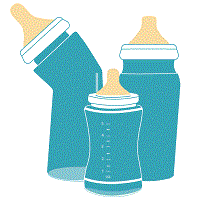
If you're planning to bottle-feed your baby breast milk or formula, you'll need bottles and nipples.
Simple, right? Here's the tricky part: Choosing ones that work for your baby.
Some babies take to a particular type of nipple or bottle and outright refuse a different brand. And some babies have less colic, gas, and spit-up with certain bottles. (Many bottles are designed to prevent these feeding problems by venting air from the bottle more effectively.)
Or, you may find that your baby doesn't have a preference but you do – for instance if a particular brand of bottles and nipples leaks or has too many confusing little parts to clean.
To start, buy or register for a small selection of bottles and nipples – either a few different bottle and nipple combinations or two different brands of newborn starter sets. Ask friends which brands they recommend and check reviews online. Once you've figured out which bottles and nipples you and your baby prefer, you can stock up.
But introducing a bottle to a breastfed baby can be a challenge. Babies used to nursing on a soft, warm breast may balk at a relatively cold, hard bottle. Manufacturers are aware of this problem and have introduced many types of bottles and nipples designed to mimic the feel of nursing. Again, you won't know which ones work for your baby until you can try them out in person.
What to look for when buying
Since bottles and nipples are sold together as a set, you'll probably use the nipples your bottles come with, and vice-versa. But for more details on your various options for both, read on.
Nipples
What nipples are made of
You can choose latex or silicone nipples. Latex nipples are softer and more flexible, but they don't last as long and some babies are allergic to them. Silicone nipples are firmer and hold their shape longer.
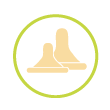
Nipple shape
Traditional nipples are shaped like a bell or dome.
Orthodontic nipples, designed to accommodate your child's palate and gums, have a bulb that's flat on the side that rests on your child's tongue.
Flat-topped nipples and wide nipples (used with wide bottles) are said to feel more like Mom's breast and may be a good bet if you plan to switch between breastfeeding and bottle feeding.
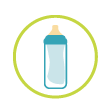
Disposable option
Disposable nipples can come in handy when you're traveling or on the go. These are sold prepackaged and sterilized, so they're convenient to pop on a bottle. But they have to be tossed after one use.
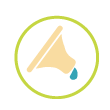
Size and flow
Nipples come in a range of sizes and flow speeds, from slow to fast. Preemies and newborns usually need the smallest size (often called "stage 1"), which has the slowest flow. Babies graduate to larger sizes and a faster flow as they get older, can suck more effectively, and drink more breast milk or formula.
Nipples are marked with the size and a suggested age range. Don't be concerned if your baby doesn't follow these guidelines exactly. You may have to try a few different nipple sizes to find one that works best for your baby.
Watch to make sure your baby isn't having a hard time getting milk or getting so much that he's choking or spitting up. And, of course, discuss any feeding concerns with your baby's doctor.
Note: Breast milk or formula should drip steadily out of the nipple, not pour out in a stream. This can happen if the flow is too fast for your baby, or if you've been using a nipple for a while and the hole has cracked and gotten larger. Find out more signs it's time to replace nipples and bottles.
Bottles
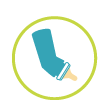
Long ago, there was one type of bottle – glass. Now you can choose between dozens of different options: angle-necked bottles, bottles with disposable liners, wide bottles, "natural-flow" bottles, and the next generation of glass bottles.
Concerns about chemicals in plastic baby bottles –particularly the chemical bisphenol-A (BPA) – have driven a renewed interest in glass. These can be more expensive up front, but don't need to be replaced unless they break, chip, or crack. If you're worried about breakage, you can buy silicone sleeves that slip over glass bottles and prevent them from breaking or shattering if dropped.
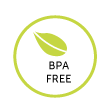
Plastic bottles are unbreakable, but they do deteriorate, so you need to replace them regularly. If you're concerned about BPA, stick to new bottles (not hand-me-downs) labeled "BPA-free." (Major U.S. manufacturers say they're no longer selling bottles and other infant feeding accessories that contain BPA.)
The number of bottles you'll need to own can range from about four to 12, depending on whether you'll primarily be bottle feeding or breastfeeding.
Start with 4-ounce bottles. They're perfect for the small amounts of breast milk or formula newborns eat in one sitting. Shift to 8- or 9-ounce bottles at about 4 months, or whenever your baby's growing appetite makes bigger bottles more practical.





